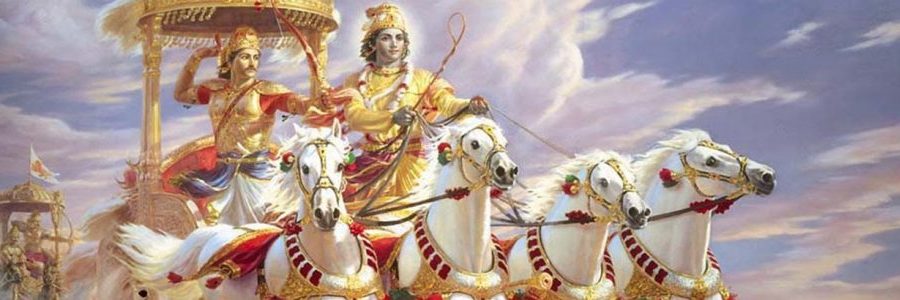Hinduism is the oldest religion in the world, and sanatana dharma is the eternal order that constitutes what we practice today as the Hindu religion. Dating back 4000 years and possibly more, Hinduism has stood the test of time in the face of multiple attempts of conquest and forced conversion, starting from Alexander the Great’s siege in 327 BCE to the Mughal conquest of the Indian subcontinent in 1526 to the era of British colonization in the late 1800s all the way to present day. Yet through the toughest of these times, Hinduism has stood with great strength and resilience and has continued to flourish as the vibrant and magnanimous faith we practice to this day. Where does this resilience come from?
“Dharma is the Ultimate Lindy”
The Lindy Effect, coined by Sir Nicholas Nassim Taleb, explains that the older an idea or a technology or a practice is, the more robust and resilient it is, and the greater its chances of a longer remaining life expectancy. Be it books like the Srimad Bhagavad Gita or technologies like Bitcoin, the fragile and rigid die out while the resilient and flexible survive. The longer something survives, the more confidence one has in its ability to continue to survive because it will have overcome more varieties of challenges and difficulties.
The Emissary astutely quoted in a recent tweet that “dharma is the ultimate Lindy.” Our idea and practice of dharma dates back millennia, and as per the Lindy effect, dharma will likely continue to survive and thrive for millennia from today.
Flexibility of Dharma
One of the reasons for this is that the nature of dharma is such that it changes with time, place, and context. What is considered dharma for one person at one given time is considered adharma for another. Dharma is an incredibly personal and flexible philosophy of life that holds truth and freedom above tradition. As a result, Hinduism and the practice of dharma has flourished in every yuga and will continue to do so, making it the oldest “religion” in the world. Hindus, while focused mostly in Bharat, constitute an ever-growing diaspora around the world because of dharma’s ability to fit itself to the customs of any country and location. As such, Hinduism has a wide following of voluntary converts from around the world. No forced conversions or missionaries are needed to spread the message of dharma because of its inherent appeal to human nature. This flexibility is what has allowed Hinduism to survive in any age, in any place, practiced by any person.
The Power of the Avatar
paritrāṇāya sādhūnāṁ vināśhāya cha duṣhkṛitām
dharma-sansthāpanārthāya sambhavāmi yuge yuge
To protect the righteous, to annihilate the wicked, and to reestablish the principles of dharma I appear on this earth, age after age. (Bhagavad Gita 4.8)
One theory is that the belief in reincarnation and avatars of God is what has allowed Hinduism to survive for this long. There is confidence that with every age and every yuga, a new avatar of God will come down to Earth to save us from the ties of adharma. In every age as dharma lessened and adharma increased, God descended to Earth in the form of an avatar to guide us back towards the path of dharma. Be it Rama, Krishna, Venkateswara, Sai Baba, Buddha, or Kalki, we look up to these exemplary individuals in our itihasas as our divine guide, and we continue to look up to those with such divine qualities in our present and future. To do so is not considered heresy because of our belief that the divinity exists in each and every living being as Brahman. Whether we call it a new avatar, successor, or even god, the confidence and hope that someone will come and guide us out of adharma in every age is what makes Hinduism so resilient.
Judaism also has a similar idea of a divine successor, or a Messiah, that will come to lift the world out of darkness. Perhaps this hope is why the Judaic faith has similarly survived countless attacks and near-extinction. Faiths that lack this idea of a divine successor are more prone to fear and insecurity of their religion dying out, and therefore have a greater need to spread their faith via missionaries and/or forced conversions.
Accommodation of Diverse Cultures
Unlike some other faiths, Hinduism is not limited to any one scripture, any one God, any one ritual, or any one place of worship. Different texts and practices are prioritized differently by different people. There is freedom of expression in the worship of God, and this freedom accommodates many different people of different lifestyles and cultures to practice the faith. Historically this was important because for a long time, there was no central leader in India. Rather, India was a conglomerate of different kingdoms and groups, each with their own local practices and cultures. Because these local groups had the freedom to practice the faith in the way they saw fit, Hinduism was able to thrive for millennia among all of these different kingdoms.
Respect for the Self and Respect for the Other
In his Address at the Final Session of the World’s Parliament of Religions, Swami Vivekananda gives thanks to the unity and harmony that the representatives of these religions have demonstrated, and he pities those that hope to achieve religious unity by means of exclusive survival of their own religion and destruction of all others.
“The Christian is not to become a Hindu or a Buddhist, nor a Hindu or a Buddhist to become a Christian. But each must assimilate the spirit of the others and yet preserve his individuality and grow according to his own law of growth.”
Hinduism has done just that and as a result has resiliently stood the test of time. Let us hope that all faiths can coexist with both respect for the self and respect for the other.

